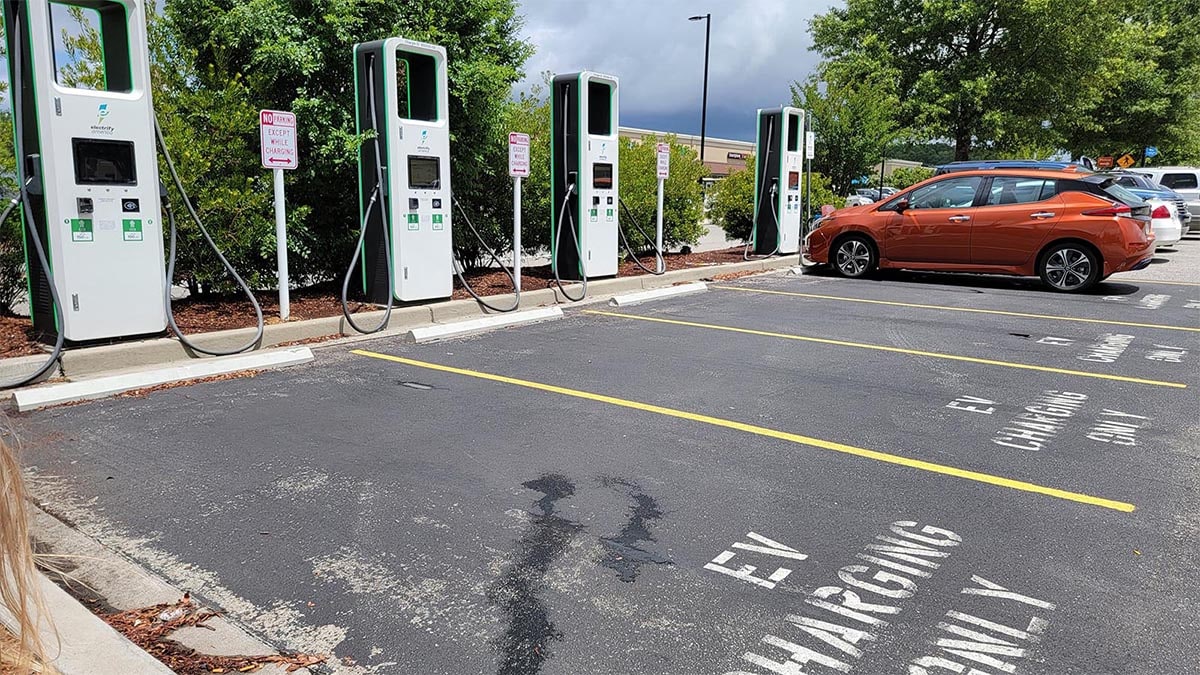EPA Announces Tighter Tailpipe Emissions Rules – Kelley Blue Book

The Environmental Protection Agency today announced a set of tailpipe emissions regulations that are simultaneously the toughest in U.S. history and milder than originally proposed.
The rules don’t instruct automakers to build electric cars. Instead, they require that the total lineup of cars each automaker sells meets certain tailpipe pollution thresholds. They’ll affect cars built between 2027 and 2032, growing tighter after 2029.
In a statement, the agency said the rules would “avoid more than 7 billion tons of carbon emissions and provide nearly $100 billion of annual net benefits to society, including $13 billion of annual public health benefits due to improved air quality, and $62 billion in reduced annual fuel costs, and maintenance and repair costs for drivers.”
The transportation sector is currently the largest single source of carbon emissions in the U.S.
Not an EV Rule, but Likely To Serve as One
Media reports have characterized the rules as a boon to electric vehicle (EV) sales. But, in an event in Washington, D.C., EPA Administrator Michael Regan pushed back on that idea. The regulations, Regan noted, are “technology-neutral and performance-based.”
They regulate the amount of greenhouse gases that cars can emit but don’t tell the auto industry how to meet those targets. White House officials, however, spoke while surrounded by dozens of new EVs and partially electric plug-in hybrid vehicles brought in as props for the event.
“We understand that consumer choice is paramount,” Regan said, noting that the industry could meet its targets through EVs, plug-in hybrids, hydrogen-powered cars, or “cleaner gasoline vehicles.”
The goal, he said, was to provide automakers with “regulatory certainty” so that they could plan their future lineups.
One of Many Relevant Regulations
No government agency tells automakers what kind of cars to build or sets quotas for EV production. But a patchwork of federal regulations influence how automakers plan.
The tailpipe emissions regulations are one part of that patchwork. Automakers must also meet fleet-wide fuel economy standards.
Yesterday, the EPA revised how electric cars count toward that figure.
The Answer Is Likely EVs
Most analysts believe the auto industry will use EVs to meet the new restrictions. A New York Times report estimates that most automakers will aim for 56% of their sales to be electric and another 16% hybrid by 2032 to meet the new targets.
Americans bought 1.2 million EVs last year. Speakers at the press conference noted that that figure exceeds projections from just a few years ago.
Final Rule Eases Proposals
Federal agencies change rules slowly, through a long process. Agencies propose new rules, accept feedback from industries and the public, and revise them before they become final.
The regulations announced today followed a more aggressive proposal last year that would likely have led automakers to aim for two-thirds of all car sales to be electric by 2032.
Regan told Kelley Blue Book, however, that the final rule is not a softening of those requirements.
“We didn’t walk it back. The environmental targets that we put out in the proposal are the same as the final.” Instead, he said, the new regulations “provided some flexibility in terms of the combination of vehicles that can reach those goals.”
The auto industry, Regan says, “convinced us that there’s more than one way to do this.”
He also noted that the new rules are back-loaded, ramping up after 2029, because “lead time is important in any industry, but particularly the car industry.”
White House National Climate Advisor Ali Zaidi echoed that sentiment, noting, “The auto industry doesn’t make one-year investments.” Setting targets that ramp up in five years, he said, allows automakers time to build new supply lines and factories to produce different cars.
Regan said the industry asked for “a little bit more flexibility in the beginning,” with a promise to “make it up on the back end” and perhaps even exceed the EPA’s targets.
Industry Involved and Supportive
In somewhat of an olive branch move, a major auto industry representative spoke alongside White House officials in support of the move. John Bozzella is president of the Alliance for Automotive Innovation, a trade group representing automakers.
“I know I’ve been a thorn in your side,” he said to Regan and Zaidi. But, he said, “2027 is right around the corner for automakers.” Bozzella said the industry’s message to the White House when writing the new rules was “not about whether this can be done, but when and how fast.”
“The future is electric,” Bozzella said. But revising the proposed rules to slow implementation “gives us the playbook” to organize needed new supply lines and factories.
Oil Industry Plans Opposition Campaign
Though the rules are technology-agnostic, the oil industry made clear that it believes automakers can’t meet them with gas-powered cars. The trade group American Fuel and Petrochemical Manufacturers announced a “a major seven-figure issue campaign across seven critical states” against the new rules heading into the 2024 election.
The organization hopes to brand the new rules with the phrase “gas car ban.”
This article was originally published by a www.kbb.com . Read the Original article here. .
